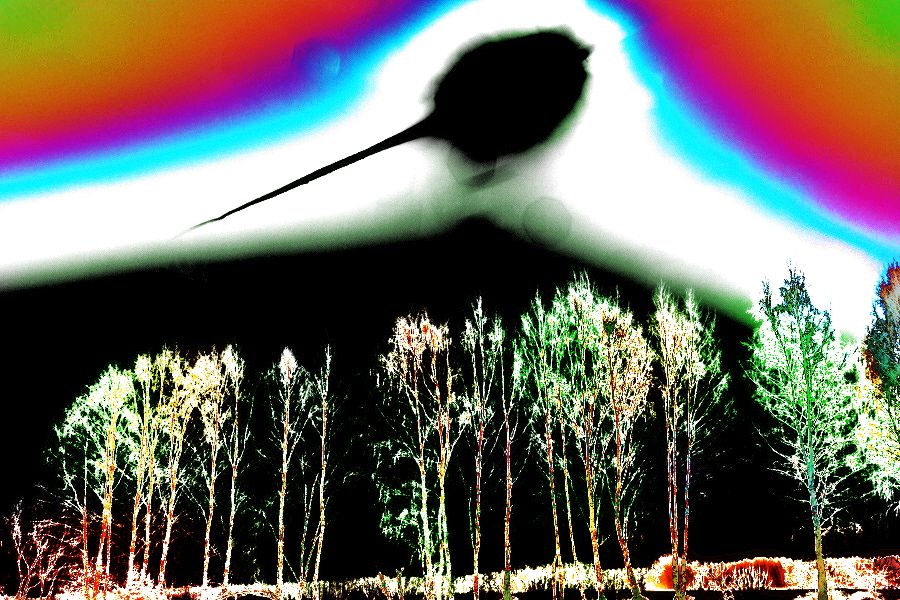
Posted on 02/23/2013 10:16:24 AM PST by SunkenCiv
Explanation: A meteoroid fell to Earth on February 15, streaking some 20 to 30 kilometers above the city of Chelyabinsk, Russia at 9:20am local time. Initially traveling at about 20 kilometers per second, its explosive deceleration after impact with the lower atmosphere created a flash brighter than the Sun. This picture of the brilliant bolide (and others of its persistent trail) was captured by photographer Marat Ametvaleev, surprised during his morning sunrise session creating panoramic images of the nearby frosty landscape. An estimated 500 kilotons of energy was released by the explosion of the 17 meter wide space rock with a mass of 7,000 to 10,000 tons. Actually expected to occur on average once every 100 years, the magnitude of the Chelyabinsk event is the largest known since the Tunguska impact in 1908.
(Excerpt) Read more at 129.164.179.22 ...
[Credit & Copyright: Marat Ahmetvaleev]
The object was about 55 feet across, blasted apart at 12 to 18 miles altitude, released approximately 500 megatons.
|
The object was about 55 feet across, blasted apart at 12 to 18 miles altitude, released approximately 500 megatons.
|
Kilotons, actually. I suspect that a 500-megaton airburst would wipe out a fairly large chunk of Russia.
I’m not buying this. WHERE are the pieces, and parts of an object that weighed so many tons! I think it was like a flat rock, that boys skip across ponds...and when it hit the atmosphere of the Earth, it skipped back into space! OR, there was some military experiment using high frequency SOUND WAVES to see how they could destroy a city instead of using explosives. This story doesn’t settle anything for me.
That is a neat picture! Thanks!
Most meteors are vapourized in the atmosphere, but if there is anything left one of two things can happen: Those with high metallic content will impact the surface of the earth, while rocky meteors tend to explode in the air. The amount of energy released is calculated from the mass and velocity of the object (E=MV^2/2).

Looks like something like that could really knock things up.
Shades of Robert Heinlein’s, The Moon is a Harsh Mistress. Just “throwing rocks” at cities could cause massive damage with none the radiation that nuclear weapons have.
I expect 500 kt would have been more than sufficient to wipe out Chelyabinsk, if the explosion had not occurred so high up (altitude estimated at 16 to 19 miles). I wonder what the SIOP had allocated to it, back in the day.
Before the shock wave arrived, the Russians had time to observe the flash, which lasted some seconds, building to a peak, and go outside with their cameras and pan back and forth at the sky, chattering excitedly. Then crack! Windows shattered, doors blown in, car alarms set off, dogs barking. Some 1100 people sought medical attention.
Looks like a great big sperm to me.
(i think i said that in post 8)
Why did the meteor explode?
Rocky meteors tend to explode in the air due to uneven heating; the leading surfaces are hotter and thermal expansion causes the rock to burst.
Same as most things, rapid heating and expansion of vapor from material heated far beond its vaporization temperature. Aerodynamic heating tends to be asymmetric with non-linear heat transfer, so it’s likely there was a massive outgassing that just blew the non-melted pieces apart from the central mass.
D’oh !
Same as most things, blah, blah, blah..teehee...
Friction.
Whoops. [blush]
The Russkies report three different impact sites from larger chunks; the damage to the town was from the shock wave, but small chunks of this will be found for some time, on the ground; much of the object just turned to (very hot) dust. And no, it didn’t skip back into space.
Manta.
Disclaimer: Opinions posted on Free Republic are those of the individual posters and do not necessarily represent the opinion of Free Republic or its management. All materials posted herein are protected by copyright law and the exemption for fair use of copyrighted works.